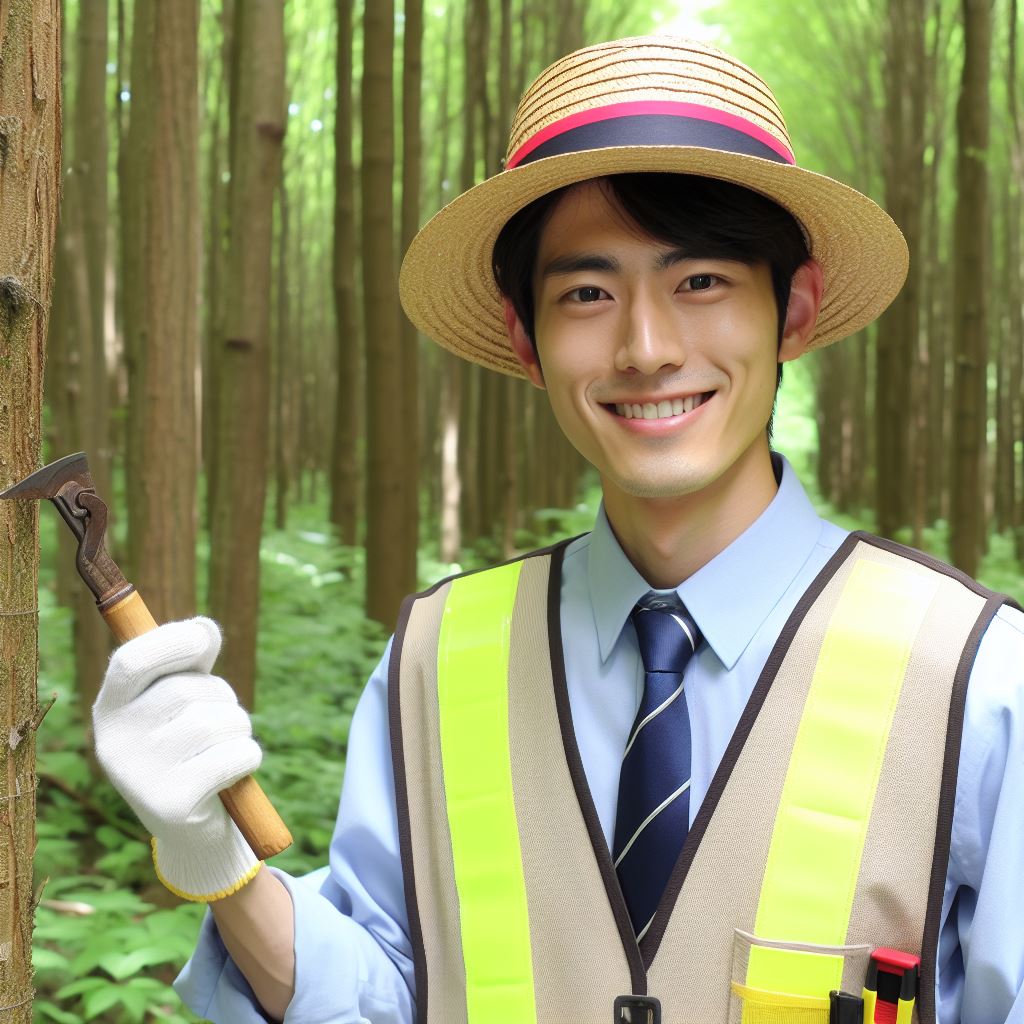Introduction
In the realm of forestry, technological innovations are fundamentally altering traditional practices, offering unprecedented opportunities to enhance both sustainability and productivity.
New Zealand stands as a pioneering force in this arena, spearheading advancements that redefine the boundaries of forest management.
One of the most striking innovations in New Zealand’s forestry sector is the utilization of planting drones.
These aerial devices are equipped with precision technology, enabling them to efficiently and accurately plant tree seedlings in remote or inaccessible areas.
This not only streamlines the reforestation process but also ensures optimal tree distribution, fostering healthy and resilient forest ecosystems.
Furthermore, the integration of artificial intelligence (AI) and machine learning algorithms has revolutionized forest management practices in New Zealand.
By analyzing vast amounts of data collected through remote sensing technologies such as satellite imagery and LiDAR, AI-powered tools provide valuable insights into forest dynamics.
From predicting timber yields to identifying areas susceptible to pest outbreaks or wildfires, these technologies empower foresters with actionable information to make informed decisions.
Moreover, wearable technology and sensor networks have emerged as invaluable assets in monitoring forest health and environmental conditions in real-time.
By deploying sensors throughout forested areas, researchers can track parameters such as temperature, humidity, and soil moisture, enabling early detection of disturbances.
This proactive approach facilitates swift intervention to mitigate risks and preserve ecosystem integrity.
Basically, the innovations in forestry technology witnessed in New Zealand exemplify a forward-thinking approach to sustainable resource management.
By embracing these advancements, New Zealand not only enhances its forestry industry’s efficiency and competitiveness but also sets a precedent for global efforts to safeguard and restore forest ecosystems in the face of mounting environmental challenges.
Importance of Forestry Tech
- Forestry tech plays a vital role in driving sustainable economic growth in New Zealand.
- It provides employment opportunities and contributes significantly to the country’s GDP.
- The forestry sector also plays a crucial role in preserving the environment and combating climate change.
- Through technological advances, forest management practices have become more efficient and sustainable.
- Forest research and development have led to innovations that improve productivity, reduce costs, and enhance timber quality.
- New Zealand’s rich biodiversity can be protected and managed effectively using forestry tech.
- With the help of technology, forests can be monitored to prevent illegal logging and protect endangered species.
- By utilizing forestry tech, New Zealand can fulfill its commitment to sustainable forest management and carbon neutrality.
The Significance of Forestry Tech in NZ’s Economy and Environment
- Forestry contributes about NZD 6 billion to New Zealand’s economy each year, making it a crucial sector.
- The sector provides employment for over 20,000 people, both directly and indirectly.
- With the use of cutting-edge technology, the industry’s productivity has increased significantly.
- Precision forestry allows for better planning, resulting in higher timber yields and reduced waste.
- Harvesting techniques have improved through mechanization, reducing the risk of accidents and improving worker safety.
- Forests act as carbon sinks, absorbing CO2 and helping combat climate change.
- Sustainable forest practices supported by technology ensure the longevity of this vital natural resource.
- Forestry tech enables efficient resource utilization, reducing waste and improving overall profitability.
- The sector’s economic growth fosters regional development, benefiting local communities and industries.
- By embracing forestry tech, New Zealand ensures a sustainable industry that supports both the economy and the environment.
The Role of Technology in Improving Forest Management and Sustainability
- Geographic Information Systems (GIS) help in mapping, monitoring, and planning forest management activities.
- Drones equipped with cameras and sensors provide real-time data for efficient and accurate forest monitoring.
- Remote sensing technology allows for quick identification of pest infestations or disease outbreaks.
- Forest inventory systems with advanced data analytics enable better decision-making and resource allocation.
- Automated tree planting machines facilitate reforestation efforts, saving time and increasing planting efficiency.
- Precision forestry tools allow for targeted harvesting, reducing damage to surrounding trees and promoting sustainable practices.
- Improved forest planning software assists in mitigating risks such as erosion and fire hazards.
- Utilizing sensors and Internet of Things (IoT) devices enable continuous monitoring of forest conditions.
- Smart forestry management systems help optimize operations, minimize costs, and decrease environmental impact.
- Emerging technologies like artificial intelligence and machine learning offer opportunities for further innovation in forestry tech.
In essence, the importance of forestry tech in New Zealand’s economy and environment cannot be overstated.
Through technological advancements, the sector has improved forest management practices, increased productivity, and ensured sustainability.
Personalized Career Consulting
Unlock your potential with expert career advice tailored to your goals. Get personalized guidance and actionable steps toward your dream career in New Zealand.
Get StartedBy embracing and investing in forestry tech, New Zealand can continue to thrive economically while upholding its commitment to sustainable forest management.
Read: Sustainable Forestry in NZ Explained
Automation in Tree Harvesting
The forestry industry in New Zealand has seen a substantial shift towards adopting automated machinery for tree harvesting.
This innovative approach has revolutionized the way trees are harvested, bringing numerous benefits to the industry and the economy as a whole.
Increased Efficiency
The adoption of automated machinery has significantly increased efficiency in tree harvesting.
These machines can work around the clock without the need for breaks or rest, allowing for constant and uninterrupted harvesting operations.
This increased efficiency not only speeds up the process but also ensures a higher yield of harvested trees.
Additionally, automated machinery can precisely fell and process trees, minimizing waste and optimizing the utilization of the harvested timber.
This precision ensures that every tree is harvested in the most efficient manner possible, maximizing the economic output of the forestry industry.
Reduced Labor Costs
One of the major advantages of automated machinery in tree harvesting is the reduced labor costs associated with traditional manual methods.
By automating the harvesting process, fewer workers are required, leading to significant savings for forestry companies.
Moreover, automation eliminates the need for specialized training and skills for manual labor, making it easier to find and hire workers for the industry.
This not only reduces costs but also addresses potential labor shortages, ensuring a steady workforce for the forestry sector.
Innovative Forestry Tech Companies in NZ
New Zealand is home to several innovative forestry tech companies that have made significant contributions to the adoption of automation in tree harvesting.
Transform Your Career with a Professional CV and Cover Letter
Stand out to employers with an ATS-optimized resume and tailored cover letter designed to match your dream role. Let us craft your job application materials for success!
Get StartedThese companies have developed cutting-edge technology that has revolutionized the industry.
1. Robotics Plus
Robotics Plus is a company based in New Zealand that specializes in the development of autonomous robots for agriculture and forestry.
Their robots are capable of harvesting trees with precision and efficiency, reducing the need for manual labor.
They have also developed software solutions that optimize harvesting operations, ensuring that each tree is processed in the most efficient way possible.
This innovative technology has made them a leader in the field of automated tree harvesting.
2. Ponsse
Ponsse is a Finnish company that has expanded its operations to New Zealand.
They are known for their state-of-the-art forestry machinery, including harvester heads and forwarders that are capable of automated tree harvesting.
Their machines are equipped with advanced technology that allows for precise felling, delimbing, and bucking of trees.
Ponsse’s automated machinery has greatly improved productivity and efficiency in the forestry industry.
3. Trimble Forestry
Trimble Forestry is a global leader in providing technology solutions for the forestry sector.
Their advanced software and hardware systems enable automation in various forestry operations, including tree harvesting.
Trimble’s solutions allow for real-time monitoring of harvesting operations, optimizing the use of resources and increasing efficiency.
Their automation technology has revolutionized the way forests are managed and harvested, improving overall productivity and sustainability.
The adoption of automated machinery for tree harvesting in New Zealand has brought numerous benefits to the forestry industry.
Boost Your Career with a Standout LinkedIn Profile
Attract recruiters and expand your network with a fully optimized LinkedIn profile tailored to highlight your strengths and professional goals. Let your profile open doors to new opportunities!
Get OptimizedWith increased efficiency and reduced labor costs, automation has transformed the way trees are harvested, making the process more sustainable and economically viable.
Innovative forestry tech companies in New Zealand continue to drive advancements in automation, further revolutionizing the industry and its practices.
Read: NZ Forestry Laws: An In-depth Guide
Precision Forestry
Precision forestry is a concept that is revolutionizing the way forests are managed in New Zealand.
By combining advanced technologies and data analytics, precision forestry aims to optimize resource utilization and improve decision-making processes, ultimately leading to sustainable forestry practices.
Applications in NZ
New Zealand’s forestry industry is one of the key sectors driving economic growth in the country.
Precision forestry plays a crucial role in this industry by providing valuable insights and data-driven solutions for forest management.
One of the significant applications of precision forestry in New Zealand is the use of drones for data collection.
Drones equipped with specialized sensors and cameras can quickly and accurately capture information about various forest attributes, such as tree species, health, and growth rates.
This data helps foresters make informed decisions about forest planning, harvesting, and replanting.
Satellite imagery is another vital tool in precision forestry.
Advanced satellite sensors and imagery analysis algorithms allow forest managers to monitor large forest areas and assess the health and growth patterns of trees over time.
This information helps in identifying potential issues, such as diseases or pest infestations, and enables timely interventions to mitigate risks and prevent losses.
In addition to drones and satellite imagery, precision forestry also utilizes a network of ground-based sensors strategically placed throughout forests.
These sensors can measure various environmental parameters, including moisture levels, temperature, and soil composition.
By continuously monitoring these factors, forest managers can optimize irrigation, fertilizer application, and overall resource allocation, leading to improved forest health and productivity.
Benefits of Precision Forestry
The adoption of precision forestry techniques in New Zealand brings several benefits to both forest managers and the environment.
Firstly, precision forestry enables improved decision-making by providing accurate and up-to-date information on forest conditions.
This allows foresters to identify potential risks and devise suitable management strategies, reducing the likelihood of unforeseen events and optimizing resource usage.
Additionally, precision forestry contributes to resource optimization.
By monitoring and analyzing forest data, managers can precisely determine the optimal time for harvest, ensuring maximum timber yield while minimizing waste.
This not only improves the economic viability of forestry operations but also reduces the environmental impact of logging activities.
Furthermore, precision forestry plays a crucial role in sustainable forest management.
By identifying and addressing issues promptly, such as invasive species or diseases, managers can prevent the spread of these problems, protecting the overall health and biodiversity of the forest ecosystem.
Overall, precision forestry represents a significant technological advancement in the field of forest management.
By harnessing the power of drones, sensors, and satellite imagery, New Zealand’s forestry industry can achieve greater efficiency, sustainability, and profitability.
Embracing precision forestry techniques is essential for ensuring the long-term health and productivity of our forests.
Read: A Day in the Life of a NZ Forester

Forest Health Monitoring
Monitoring the health of forests and preventing diseases is of utmost importance in the field of forestry.
Technology has played a significant role in enhancing forest health monitoring in New Zealand (NZ).
This article explores the use of technology, particularly remote sensing tools, in early detection and prevention of pests and diseases in NZ’s forests.
Use of Technology in Monitoring Forest Health
Technology has revolutionized forest health monitoring by providing faster and more accurate data analysis.
It enables forest managers to detect diseases and pests in their early stages, preventing widespread contamination.
Role of Remote Sensing Tools
Remote sensing tools, such as aerial imagery and satellite monitoring, are critical in forest health monitoring.
These tools allow for the collection of real-time data, enabling quicker response to potential threats.
Early Detection and Prevention of Pests and Diseases
Remote sensing tools aid in the identification of forest disturbances caused by pests and diseases.
By monitoring changes in vegetation health, forest managers can detect and respond to threats promptly.
Specific Initiatives and Technologies in NZ
- MODIS (Moderate Resolution Imaging Spectroradiometer): MODIS is a satellite-based remote sensing tool used in NZ for forest health monitoring.
It provides high-resolution imagery and measures key environmental parameters. - LiDAR (Light Detection and Ranging): LiDAR technology uses laser beams to create detailed 3D maps of forests, allowing for precise identification of pests and diseases.
- Eyes in the Sky: This initiative combines aerial imagery and satellite monitoring to gather data on forest health across NZ. It detects abnormalities in vegetation and initiates prompt actions.
- Geographic Information Systems (GIS): GIS technology integrates remote sensing data with spatial information, aiding forest health monitoring and management.
- Kauri Dieback Programme: This initiative focuses on preventing the spread of Kauri dieback disease, a fungal infection threatening NZ’s native Kauri trees.
It utilizes remote sensing tools to identify infected areas and enforce biosecurity measures. - Rapid Ohia Death Detection: NZ is also using remote sensing tools, such as drones equipped with multispectral cameras, to identify forests affected by Rapid Ohia Death disease.
- Collaboration and Data Sharing: NZ’s forestry sector encourages collaboration and open data sharing among researchers and forest managers.
This aids in the early detection and prevention of pests and diseases.
In general, technology, especially remote sensing tools, has revolutionized forest health monitoring in NZ.
By enabling early detection and prevention of pests and diseases, these technologies ensure the sustainability of forests.
Initiatives such as MODIS, LiDAR, and collaborative efforts highlight NZ’s commitment to harnessing innovation for the protection of their valuable forests.
The continuous development and adoption of advanced technologies will shape the future of forest health monitoring globally.
Read: Career Path: Becoming an Agri Manager
Sustainable Forest Management
Use of modeling and analytics tools for optimizing forest growth and yield
In order to achieve sustainable forest management in New Zealand, innovative forestry tech plays a crucial role.
By utilizing the latest modeling and analytics tools, forest growth and yield can be optimized, leading to sustainable practices.
Here are some examples:
- Remote Sensing: Remote sensing technology allows for data collection from a distance, making it easier to monitor forest health and biodiversity.
With drones and satellites capturing high-resolution images, forest managers can identify areas that require intervention. - GIS Mapping: Geographic Information System (GIS) mapping helps in analyzing and visualizing complex data, enabling foresters to make informed decisions.
It provides insights regarding forest composition, soil conditions, and potential risks like pests or diseases. - Computer Modeling: Advanced computer models simulate various scenarios, predicting how forests will grow and develop under different conditions.
This allows for effective planning and prioritizing of resources, ensuring long-term sustainability. - Data Analytics: By implementing data analytics tools, vast amounts of forest-related information can be processed and analyzed.
This leads to better understanding of forest dynamics, thus facilitating efficient resource allocation. - Harvesting Technology: Innovations in harvesting machinery have made the process more precise, reducing waste and damage to surrounding trees.
Specialized equipment can selectively target specific trees for logging, minimizing the impact on the overall ecosystem. - Forest Inventory Systems: Digital inventory systems provide real-time data on forest resources, including tree species, sizes, and growth rates.
This knowledge helps in planning sustainable harvest levels while preserving biodiversity.
Examples of successful sustainable forest management practices empowered by technology
Through the application of these technologies, New Zealand has witnessed successful sustainable forest management practices:
- One example is the implementation of precision forestry techniques in Kaingaroa Forest.
By combining lidar, AI, and forest inventory data, managers have optimized tree planting patterns, resulting in higher growth rates and increased yields. - Efficient resource allocation has also been achieved through the use of data-driven decision-making tools.
Forest managers can accurately identify areas prone to wildfire or pest infestations, allowing for timely interventions. - Forest certification programs have been made possible through ongoing advancements in forestry tech.
By tracking and monitoring practices in real-time, it ensures compliance with sustainable management standards and promotes responsible forestry. - Carbon sequestration projects have been facilitated by technology, enabling precise measurement and monitoring of carbon stored in forests.
This contributes to New Zealand’s efforts in combatting climate change and achieving its emissions targets.
In a nutshell, innovative forestry tech plays a vital role in achieving sustainable forest management in New Zealand.
Through the use of remote sensing, GIS mapping, computer modeling, and data analytics, forest managers can make informed decisions.
These technologies empower successful sustainable practices, such as precision forestry, efficient resource allocation, forest certification programs, and carbon sequestration projects.
Conclusion
New Zealand’s forestry industry has experienced significant innovations in technology.
These advancements have played a crucial role in improving efficiency, sustainability, and environmental conservation.
One key innovation is the use of drones for aerial surveys and monitoring.
This technology allows for accurate and timely data collection, enabling better decision-making and resource management.
Another significant advancement is the development of precision forestry equipment.
These high-tech machinery enhance productivity and reduce environmental impact by optimizing tree harvesting, minimizing waste, and protecting soil quality.
The implementation of digital platforms and software solutions has revolutionized the forestry sector.
These tools facilitate better communication, planning, and tracking of operations, promoting transparency and efficiency throughout the supply chain.
Overall, these innovations are vital for the forestry industry as they ensure sustainable practices, reduce ecological footprint, and maximize economic returns.
By adopting these technologies, New Zealand can continue to grow its forestry industry while preserving its natural resources.
As readers, it is important to stay informed about these advancements and the potential they have to shape the future of forestry.
Supporting technological advancements in the forestry sector is crucial by advocating for research, investment, and policies that favor sustainable and efficient practices.
By embracing these innovations and supporting ongoing technological advancements, we can contribute to a greener future and a thriving forestry industry in New Zealand and beyond.




